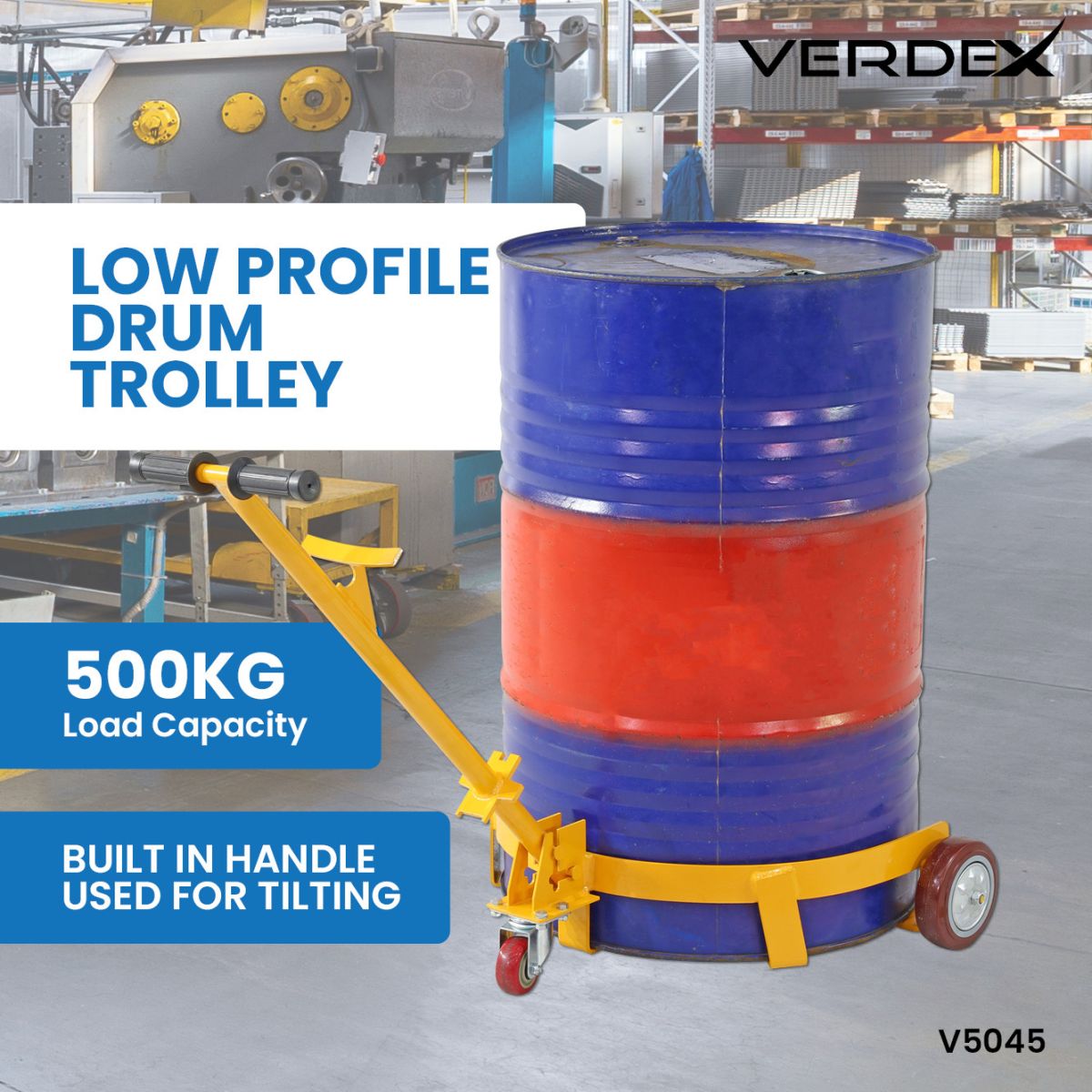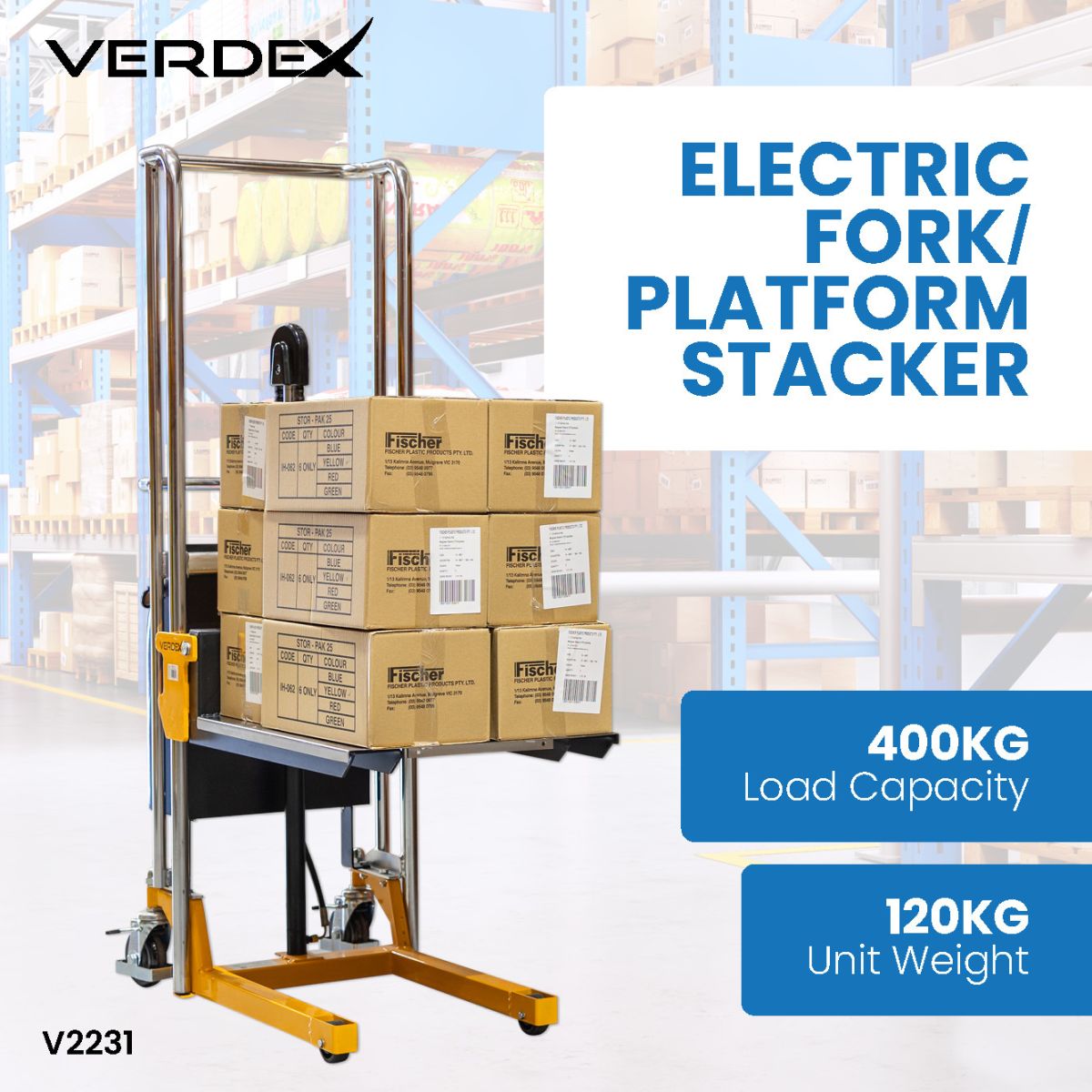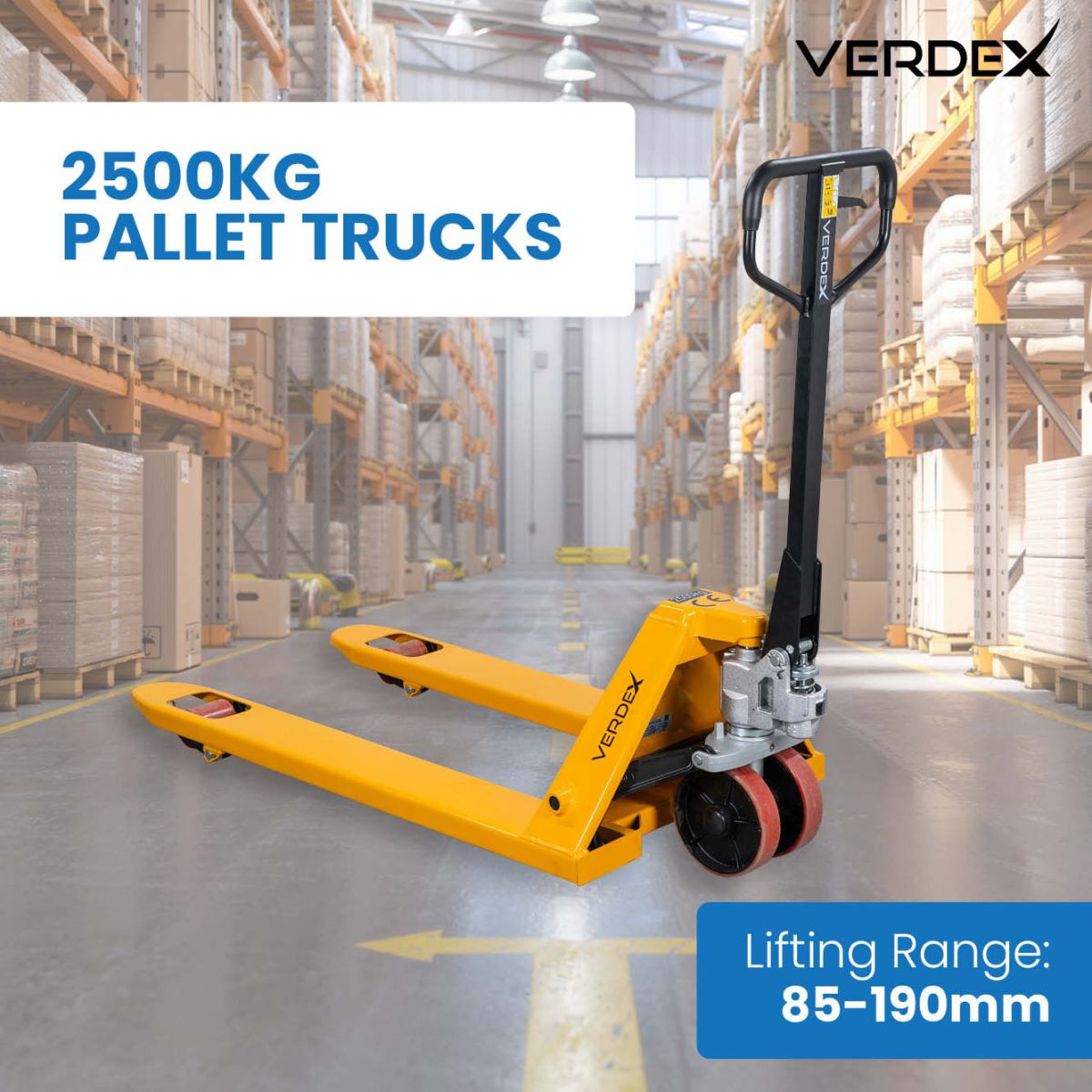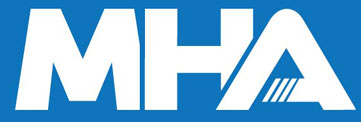How Manual Lifting Hurts Your Business and 7 Ways Lifting Equipment Can Reduce It
Date Posted:19 November 2025
Manual lifting is costing your business thousands in injuries, claims, and downtime. Discover the hidden financial risks of unsafe manual handling and 7 ways reliable lifting equipment can protect your staff, company and reputation.
Verdex Insights: At a Glance
-
The Challenge: Manual lifting is a leading cause of expensive workplace incidents, leading to serious musculoskeletal injuries, high workers’ compensation and insurance costs, lost productivity, and the risk of WHS non-compliance across Australian businesses.
-
The Insight: These problems are preventable. By investing in the right lifting equipment, businesses can significantly reduce physical strain and injury risk, protect valuable goods, and enhance operational efficiency by allowing fewer staff members to complete heavy tasks safely.
-
The Verdex Solution: Verdex supplies durable, Australian Standards Compliant lifting equipment, including pallet jacks, manual stackers and lifters, scissor lift trolleys and tables, and many more. Choosing Verdex ensures your business achieves higher safety standards, lowers long-term operational costs, and maintains WHS compliance with premium-quality, reliably delivered solutions.
How Manual Lifting Hurts Your Business
Manual lifting is a daily routine in many workplaces, from warehouses and logistics hubs to workshops, construction sites, and retail backrooms. What many businesses underestimate is how much this seemingly simple task can cost in injuries, downtime, and lost productivity.
Manual handling injuries remain one of the leading causes of workplace incidents across Australia. Despite increased awareness, workers continue to lift, push, or carry loads that exceed safe limits, leading to serious musculoskeletal injuries, time off work, and higher compensation costs.
The good news is that these problems are entirely preventable. By investing in the right lifting equipment, businesses can significantly reduce injury risks, improve efficiency, and save thousands in operational costs every year.
Let’s look at how manual lifting affects your business and how the right lifting equipment can make a lasting difference.
 Extra Large Scissor Lift Trolley ↗ operated by a warehouse worker, demonstrating safe and efficient lifting in a high-capacity racking aisle.
Extra Large Scissor Lift Trolley ↗ operated by a warehouse worker, demonstrating safe and efficient lifting in a high-capacity racking aisle.
The Hidden Cost of Manual Lifting
Lost Time and Productivity
When workers suffer back injuries, strains, or fatigue, productivity takes a major hit. Manual handling injuries often require long recovery periods, and even after returning to work, employees may not perform at full capacity.
This downtime affects the entire workflow, delays order fulfilment, and disrupts customer delivery schedules.
Higher Compensation and Insurance Costs
According to Safe Work Australia, manual handling injuries are among the most expensive workplace claims. The costs include workers’ compensation, medical treatment, and the added expense of hiring and training replacements.
Unsafe lifting practices can also push insurance premiums higher, creating a lasting financial strain for businesses.
Risk of Damaged Goods
Manual lifting not only puts employees at risk but can also damage products. Dropping or mishandling heavy or awkward loads may result in broken stock, wasted materials, and unhappy customers.
By reducing the need for manual handling, you safeguard both workers and goods.
WHS Non-Compliance
Under Australian Work Health and Safety (WHS) laws, employers must provide a safe working environment. Failing to manage manual handling risks can lead to compliance breaches, penalties, and reputational damage.
Providing the right lifting aids is not just good practice; it’s an essential step in meeting WHS obligations.
 Trailer Stabilising Jack Stand ↗ supporting a loader trailer during unloading, providing essential stability and safety on-site.
Trailer Stabilising Jack Stand ↗ supporting a loader trailer during unloading, providing essential stability and safety on-site.
7 Ways Lifting Equipment Can Reduce Manual Handling Risks
The right lifting equipment does more than just reduce injuries. It can improve how your entire operation functions. Here are seven key ways it helps.
1. Reduces Strains and Sprains
Lifting aids such as pallet jacks, hydraulic lifters, and scissor lift tables reduce the physical strain of handling heavy loads. Workers no longer need to bend, twist, or overreach, which are major causes of back and shoulder injuries.
2. Increases Efficiency
With lifting equipment, tasks that once required two or three people can be completed safely by one. This increases overall productivity and allows staff to focus on higher-value work.
3. Prevents Fatigue
Repetitive lifting and carrying can quickly lead to fatigue. Equipment like electric lifters and pallet stackers take on the heavy lifting, helping workers maintain energy and accuracy throughout the day.
4. Protects Your Products
Mechanical lifting solutions move products smoothly and securely. Whether you’re handling fragile goods, bulky materials, or uneven loads, the right tools reduce drops, scratches, and breakages.
5. Improves Workplace Morale
When employees work in a safer and more supportive environment, morale improves. Reducing the physical burden of manual tasks helps retain skilled workers, lowers absenteeism, and boosts overall job satisfaction.
6. Enhances Safety Compliance
Using the right lifting equipment demonstrates your commitment to WHS compliance. It provides clear evidence of risk control during inspections and helps protect your business from potential fines or legal issues.
7. Saves Money in the Long Run
Although some businesses see lifting equipment as an expense, it’s actually a smart investment. Fewer injuries mean less downtime, fewer compensation claims, and lower staff turnover, leading to significant savings over time.
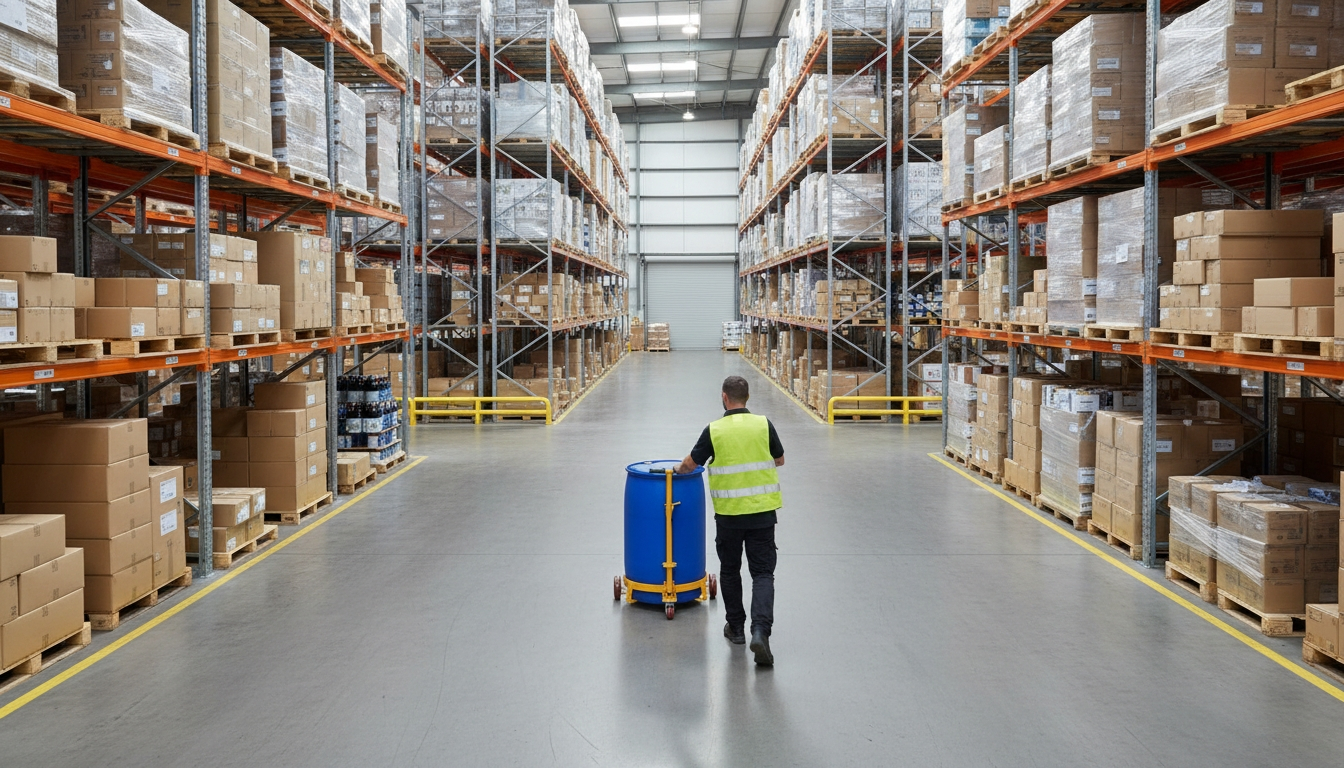 Low Profile Drum Trolley ↗ operated by a warehouse worker to transport a full drum.
Low Profile Drum Trolley ↗ operated by a warehouse worker to transport a full drum.
Common Types of Lifting Equipment
Choosing the right tool depends on your workplace needs. Some of the most common lifting solutions include:
-
Pallet Jacks – Ideal for moving palletised goods quickly and safely across warehouses.
-
Hydraulic Lift Tables – Great for adjusting working heights and reducing bending strain.
-
Electric Pallet Stackers – Allow effortless stacking and lifting of heavy pallets.
-
Drum Lifters and Trolleys – Designed for handling cylindrical loads like barrels and gas cylinders.
-
Hoists and Winches – Perfect for vertical lifting of heavy machinery or components.
Each piece of equipment helps make handling safer, faster, and more efficient across different industries.
Why Investing in Lifting Equipment Matters
Unsafe manual handling costs Australian businesses millions of dollars every year in compensation, lost productivity, and compliance issues. Yet, most of these costs can be avoided.
By introducing lifting aids, you reduce the physical strain on workers and show a strong commitment to safety and compliance.
The benefits are clear:
-
Fewer injuries and compensation claims.
-
Improved staff morale and retention.
-
Increased productivity and efficiency.
-
Lower insurance costs and WHS risks.
A modest investment in the right lifting solution today can save your business from significant financial and operational losses tomorrow.
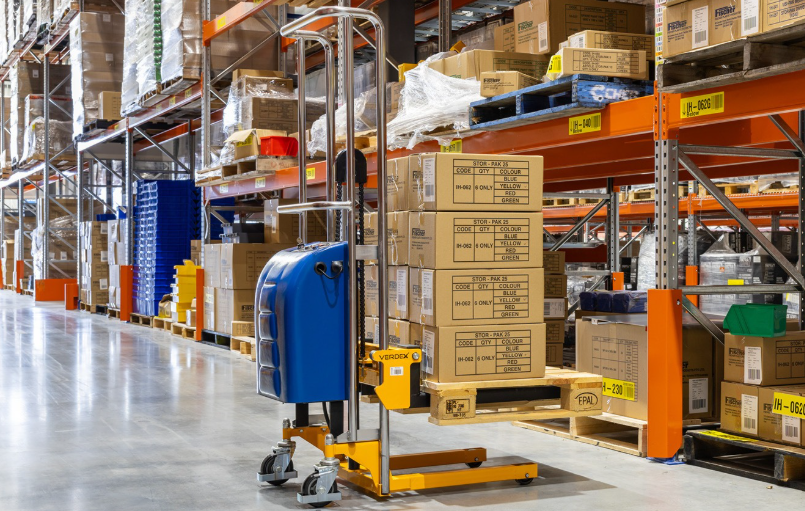 Electric Fork / Platform Stacker ↗ used to streamline material handling in a warehouse, offering stable lifting and placement of boxed inventory.
Electric Fork / Platform Stacker ↗ used to streamline material handling in a warehouse, offering stable lifting and placement of boxed inventory.
Why Choose Verdex for Lifting Equipment
Verdex is a trusted Australian-owned supplier of workplace safety and handling equipment, helping businesses improve safety, compliance, and productivity. Here’s why Verdex is the go-to choice for lifting solutions:
-
Australian Standards Compliant – Every product meets or exceeds national safety standards.
-
Premium Quality Equipment – Built for durability, reliability, and long-term performance.
-
Comprehensive Range – From pallet jacks and lifters to hydraulic tables and trolleys.
-
Fast Nationwide Delivery – Quick, reliable delivery across Australia.
-
Price Beat Guarantee – Outstanding value without compromising quality.
-
100% Australian-Owned – Supporting local industries with dependable workplace solutions.
When you buy from Verdex, you’re investing in safety, performance, and peace of mind.
Buy Your Lifting Equipment Today
Manual handling does not have to be a source of injury or inefficiency. With the right lifting equipment, your workplace can achieve higher safety standards, greater productivity, and lower operating costs.
Explore Verdex’s complete range of lifting and handling solutions online or contact our friendly team for expert advice. Verdex offers premium quality, fast delivery, and unbeatable value every time.
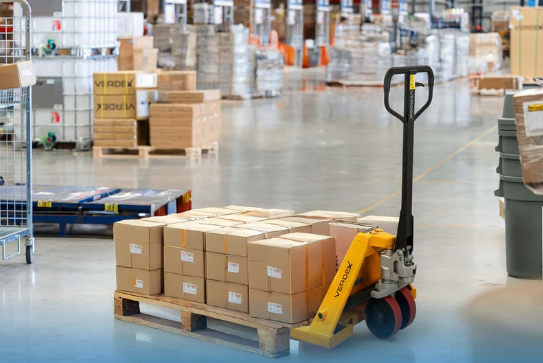 2500kg Pallet Truck ↗ for transporting boxed goods across a warehouse floor, allowing quick and reliable material movement.
2500kg Pallet Truck ↗ for transporting boxed goods across a warehouse floor, allowing quick and reliable material movement.
































































































































 Trolleys & Hand Trucks
Trolleys & Hand Trucks Cage Trolleys
Cage Trolleys Cleaning Carts & Trolleys
Cleaning Carts & Trolleys Construction Trolleys
Construction Trolleys Custom Trolleys
Custom Trolleys Hand Trucks & Dollies
Hand Trucks & Dollies Laundry/Linen Trolleys
Laundry/Linen Trolleys Lifting Trolleys
Lifting Trolleys Order Picking Trolleys
Order Picking Trolleys Panel Cart Trolleys
Panel Cart Trolleys Platform Trolleys
Platform Trolleys Powered Trolleys
Powered Trolleys Shelf & Tiered Trolleys
Shelf & Tiered Trolleys Shopping Trolleys
Shopping Trolleys Stainless Steel Trolleys
Stainless Steel Trolleys Tool Trolleys
Tool Trolleys Utility & Service Carts
Utility & Service Carts Lifting & Handling Equipment
Lifting & Handling Equipment Forklift Attachments
Forklift Attachments Jib Attachments
Jib Attachments Lifting Hoists & Pallet Hooks
Lifting Hoists & Pallet Hooks Load Skates & Tow Tugs
Load Skates & Tow Tugs Manual Stackers & Lifters
Manual Stackers & Lifters Pallet Jacks
Pallet Jacks Pallet Lifters
Pallet Lifters Pallet Rotators & Dispenser
Pallet Rotators & Dispenser Powered Pallet Trucks & Electric Lifters
Powered Pallet Trucks & Electric Lifters Scissor Lift Trolleys and Tables
Scissor Lift Trolleys and Tables Conveyor Equipment
Conveyor Equipment Conveyor Frames & Stands
Conveyor Frames & Stands Roller & Skate Conveyors
Roller & Skate Conveyors Ladders & Access Equipment
Ladders & Access Equipment Container & Yard Ramps
Container & Yard Ramps Ladders & Step Stools
Ladders & Step Stools Work Platforms & Crane Cages
Work Platforms & Crane Cages Drum Handling Equipment
Drum Handling Equipment Drum Storage & Bunding
Drum Storage & Bunding Drum Trolleys & Lifters
Drum Trolleys & Lifters Forklift Drum Handling
Forklift Drum Handling Waste Handling & Bins
Waste Handling & Bins Bin Lifters & Tippers
Bin Lifters & Tippers Plastic Waste & Wheelie Bins
Plastic Waste & Wheelie Bins Steel Waste & Tipping Bins
Steel Waste & Tipping Bins Waste Carts
Waste Carts Dangerous Goods Storage & Spillage
Dangerous Goods Storage & Spillage Aerosol Cans Storage Cages
Aerosol Cans Storage Cages Bunded Pallets & Storage
Bunded Pallets & Storage Corrosive Goods Storage Cabinets
Corrosive Goods Storage Cabinets DG Storage & Trolleys
DG Storage & Trolleys Flammable Liquid Cabinets
Flammable Liquid Cabinets Forklift Gas Storage Cages
Forklift Gas Storage Cages Site Storage
Site Storage Spill Kits
Spill Kits Shelving & Storage Equipment
Shelving & Storage Equipment Stillage & Transport Cages
Stillage & Transport Cages 750 Series Cage Configurations
750 Series Cage Configurations Heavy Duty Cabinets
Heavy Duty Cabinets Heavy Duty Shelving
Heavy Duty Shelving Mega Bins & Pallets
Mega Bins & Pallets Packing & Workbenches
Packing & Workbenches Parts Trays & Stor-Pak Bins
Parts Trays & Stor-Pak Bins Pegboard & Louvre Panels
Pegboard & Louvre Panels Plastic Bins & Crates
Plastic Bins & Crates Plastic Handling Solutions Bins
Plastic Handling Solutions Bins Plastic Pallets
Plastic Pallets Stack & Nest Bins
Stack & Nest Bins Pallet Racking Accessories
Pallet Racking Accessories Workplace Equipment
Workplace Equipment Modular Workbenches
Modular Workbenches Electric Height-Adjustable Workbenches
Electric Height-Adjustable Workbenches Floor Matting
Floor Matting General Workplace Equipment
General Workplace Equipment Industrial Weighing Scales
Industrial Weighing Scales Packaging Machinery
Packaging Machinery Stationery Cupboards
Stationery Cupboards Storage and Stillage Cages
Storage and Stillage Cages Tool Trolleys
Tool Trolleys Tooling Cabinets
Tooling Cabinets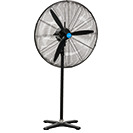 Workshop Fans and Coolers
Workshop Fans and Coolers Safety Barriers, PPE & Signage
Safety Barriers, PPE & Signage Barriers & Bollards
Barriers & Bollards First Aid Equipment
First Aid Equipment Gloves, Knives and PPE
Gloves, Knives and PPE Signage
Signage Cleaning & Site Supplies
Cleaning & Site Supplies Cleaning Equipment
Cleaning Equipment Cleaning Trolleys
Cleaning Trolleys Rubbish Bins
Rubbish Bins Signs & Traffic Supplies
Signs & Traffic Supplies Construction Equipment
Construction Equipment Construction Trolleys
Construction Trolleys Waste Handling
Waste Handling General Site Equipment
General Site Equipment Concrete Equipment
Concrete Equipment Site Storage
Site Storage Lifting Equipment
Lifting Equipment Verdex Specials
Verdex Specials
.jpg)

